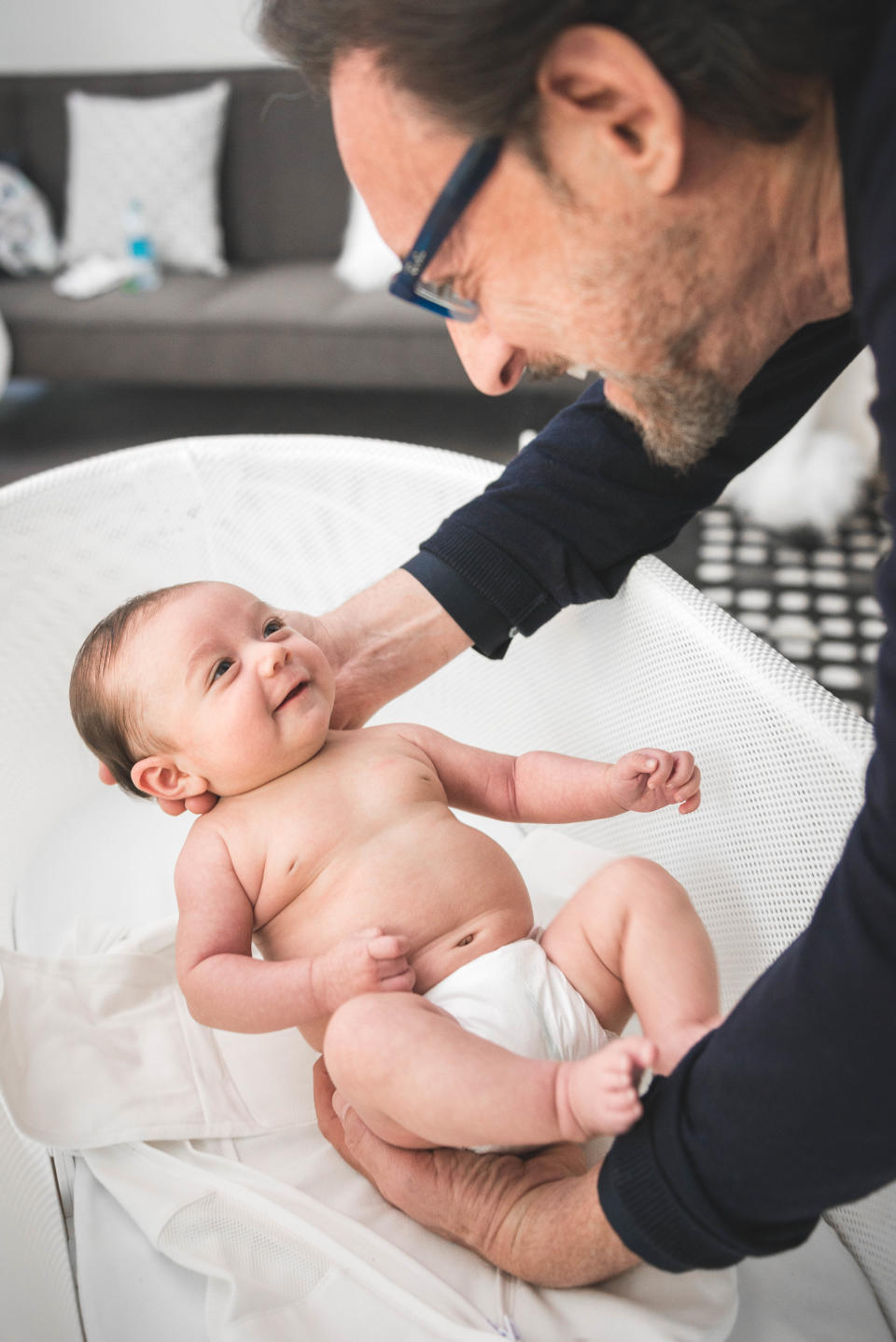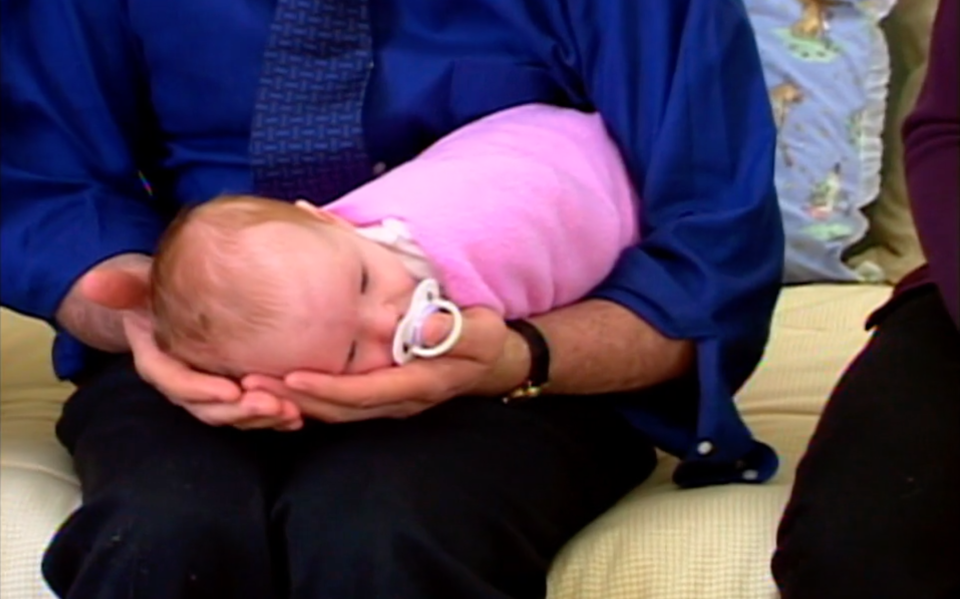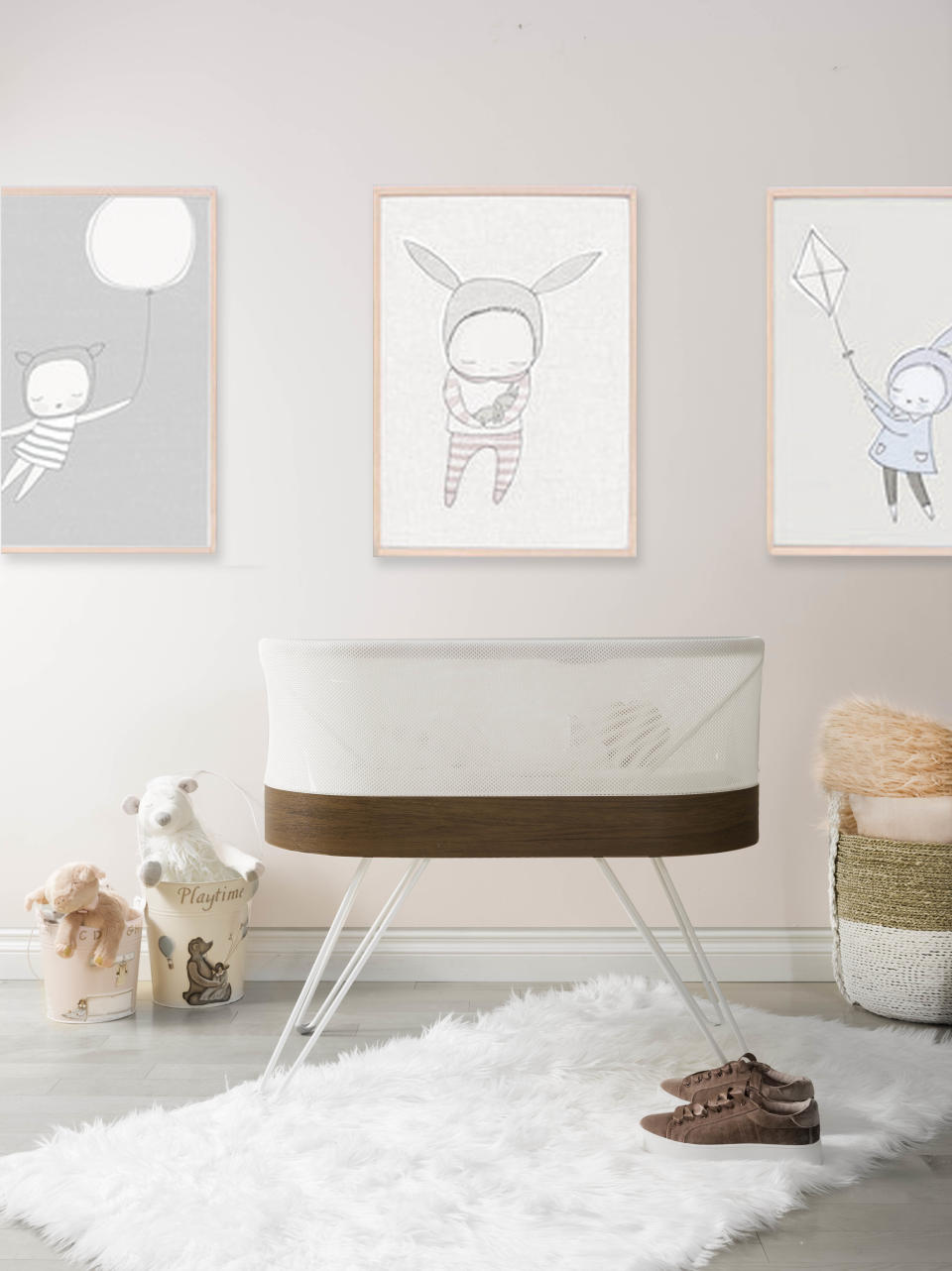The biggest lie new parents are led to believe
At a time where cost of living means more of us are chained to the workforce for longer, the network of family and friends who would’ve once made up the traditional ‘village’ of yesteryear now have very little time to spare for childcare.
Unfortunately, bringing home a new baby hasn’t become any less demanding, and the nights are long and lonely for many new mums.
“The biggest lie that new parents believe is that a normal family is a mum and a dad and a baby - or two babies, or three babies and a dog,” Dr Harvey Karp, a paediatrician with over 25 years of practice and a couple of best-selling parenting books under his belt, tells Yahoo Lifestyle.

“A normal family used to have five people helping; your grandma, your aunts, your next door neighbour’s eldest daughter, all saying ‘let me hold the baby’, and holding the baby for hours while you do what you need to do.
“Most people just don’t have that extended family anymore and so they’re drawn out and they’re running on fumes.”
In Taiwan, ‘maternity hotels’ where new mothers are offered 24-hour care by specialised staff have become increasingly popular, and offer everything from newborn night feeds, to home cooked meals for mum and plenty of pampering.
While stays at such facilities, including this luxury one opening shortly in Singapore, are mere fantasy for most of us Down Under, Dr Karp believes technology can have a part to play, and he’s created a robotic newborn bed that’s designed to step in when the village can’t.
The SNOO bassinet uses a series of microphones to sense when a baby is fussing, and intuitively begins rocking and using white noise to coax them back to sleep, essentially meaning parents can outsource some of the times they need to wake in the night to attend to their baby.
It’s become something of a cult buy in the three years it’s been available in Australia – even despite its USD$1,300 price tag – after being used by the likes of Serena Williams, Beyonce, Carrie Bickmore and Osher Gunsberg.

Critics have quite rightly observed that it replaces human contact with technology, but Dr Karp’s counter argument is that it’s a tool in new parents’ arsenal in the absence of other caregivers.
“We joke that SNOO is not a baby bed, it’s your older sister that says; you sleep and I’ll hold, rock and shush your baby all night long, and I’ll get you if the baby is fussing for a feed,” he tells us.
“Th more rested and happier and healthier the mum is, the better able she is to respond to her baby’s needs.”
Not a novel concept
The idea behind the bed is rooted in Dr Karp’s 5 ‘S’s for settling newborns which he first penned in his 2002 book, The Happiest Baby on the Block.
His philosophy is that newborns are very immature when they’re born and crave the comforts of the womb for their first few months of life, therefore, by imitating the environment they were used to in utero - with his 5 ‘S’s of swaddling, shushing, swinging, side or stomach lying and sucking - you can trigger a calming reflex that will easily soothe and settle them.
Videos of him swaddling and shushing newborns are mesmerising as they go from screaming and red faced, to the picture of peace and contentment, and they’ve helped him win over a number of celebrity clients over his years of practice in LA.
“Ashton Kutcher once said to me, ‘I love it when I find a crying baby because I say give me the baby and I feel like a magician because I can do these techniques so well!’,” Dr Karp casually recounts.

Three of the techniques – swaddling, shushing and swinging – have been applied in the SNOO to convince babies to fall asleep and stay asleep for longer. They’re hardly revolutionary ideas, caregivers have been rocking and shushing their babies to sleep for centuries, but the difference here is that the bed, rather than a parent, is doing it.
It also means that the baby is rocked to sleep in their own bed, instead of needing to be transferred from a parent’s arms to a traditional bassinet or cot where the environment – lying still on their backs (the only safe sleeping position) and often in a quiet room – is very different to what they were used to in utero.
“A lot of people have a favourite pillow or a hardness or softness of the bed that they like,” Dr Karp says, “Now if you took that away from them, they could sleep on a cement floor, they’re just not going to sleep very well – and babies are the same.”
“If you take away everything they’re used to in the womb; sound, motion, rocking, they will sleep, they’re just not going to sleep as well, they’re going to wake up more easily, they’re going to be demanding a little more help from their parents.”
Although the bassinet’s biggest selling point is that it offers new parents more sleep, it does not diminish the need for babies to be fed and changed regularly throughout the night, as no amount of motion or sound will have any impact if a baby is crying because they’re hungry or have a dirty nappy.

Of course, sleep in the first few months of a baby’s life is only one piece of the puzzle, and the absence of a village leaves a void in many aspects of childrearing for modern parents.
Technology can help, but it can’t replace much of it, and in a society where many households rely on two incomes to make ends meet, you can’t help but think that something’s gotta give.
Got a story tip or just want to get in touch? Email us at lifestyle.tips@verizonmedia.com

 Yahoo Lifestyle
Yahoo Lifestyle 

